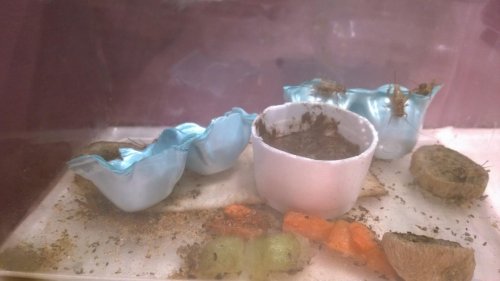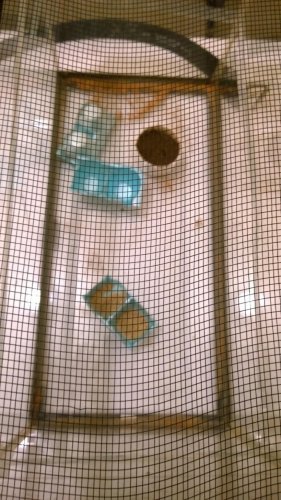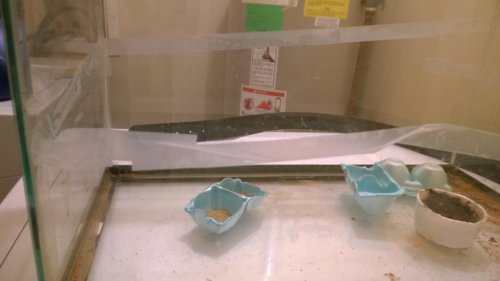proudaunt5
New Member
hi, i was hoping i could get some help, im breeding crickets for the first time. i have researched breeding crickets over an over and everyone has said to use peat moss, or soil. i have no money to go out an buy soil just to breed crickets (the reason im breeding them is bc i cant afford to constantly buy crickets) so i just went out to my back yard an scooped up some dirt an put that into a stirofoam cup that i cut down to a smaller size so the crickets can get in and out. i left it in the crickets cage for two days, and took it out today so that i can start off small and work my way up. and i then replaced another cup full of dirt in the cage. i put the older cup (that i kept in for two days), into A small aquarium, and added some pieces of an egg carton in there an have it setting on top of my dryer for heat (my wash room is the most humid room in the house). i also put scotch tape around the aquarium to keep the crickets from escaping. ( i know alot of websites and videos say use packaging tape, but i dont have any) Now my questions for you are, am i doing this right? and also what is the shortest amount of time that it could take eggs to hatch? and how long after eggs start to hatch, would i have to take the cup of dirt out of the cage? and will the scotch tape work as well as packaging tape to keep them from escaping? also if u have any helpful tips please let me know!!! thank you guys very much an i look forward to hearing from you guys.
Attachments
Last edited:



